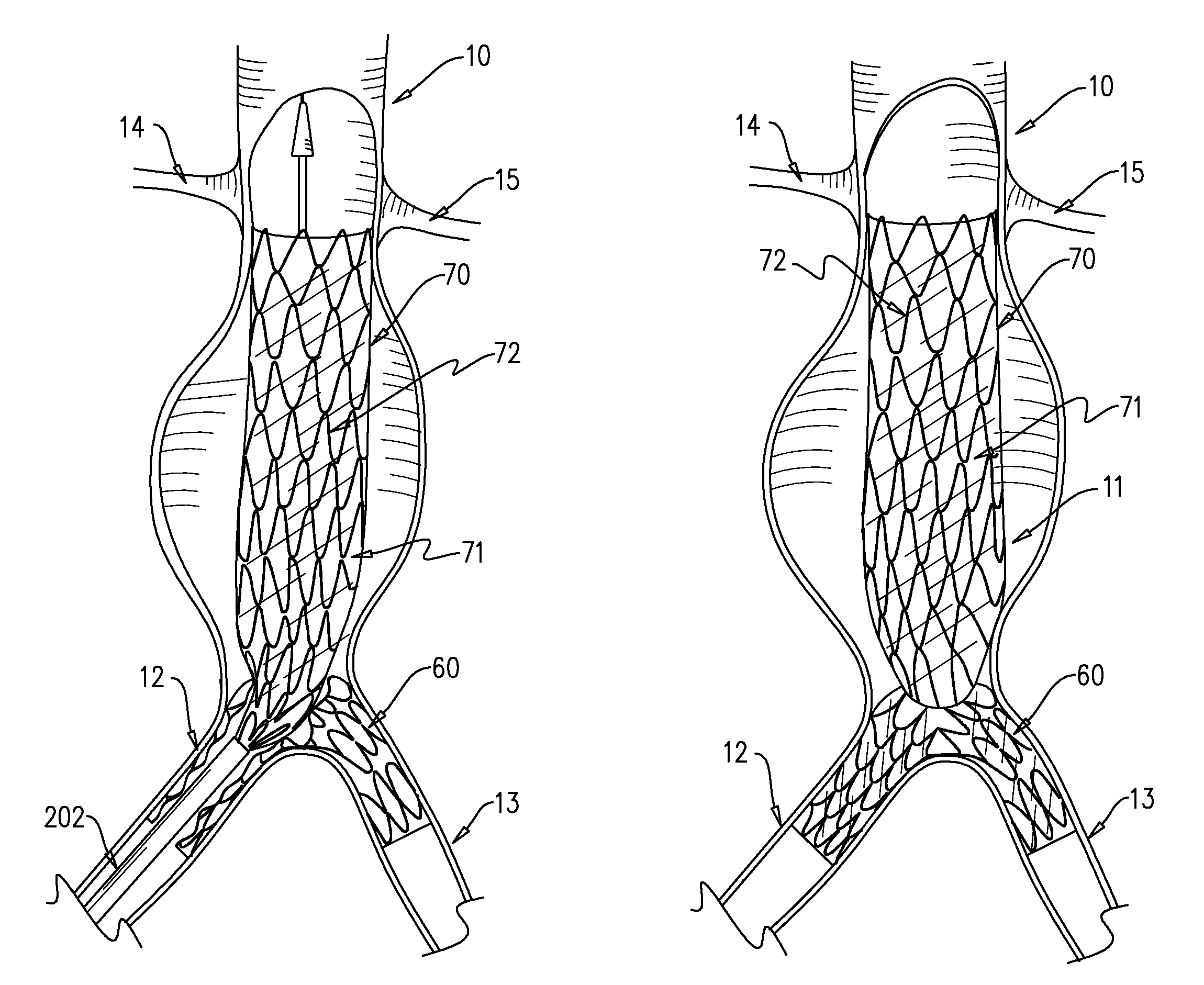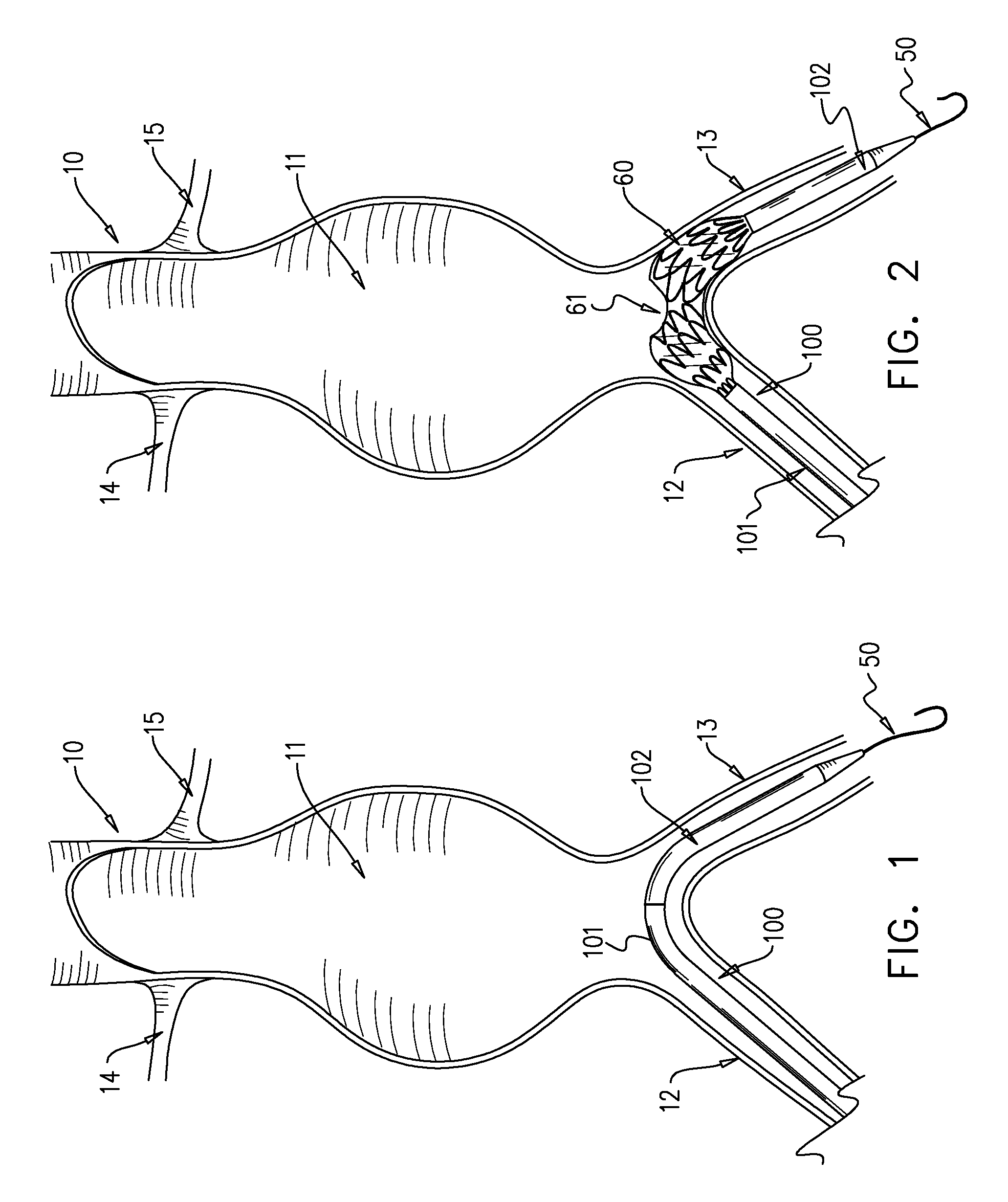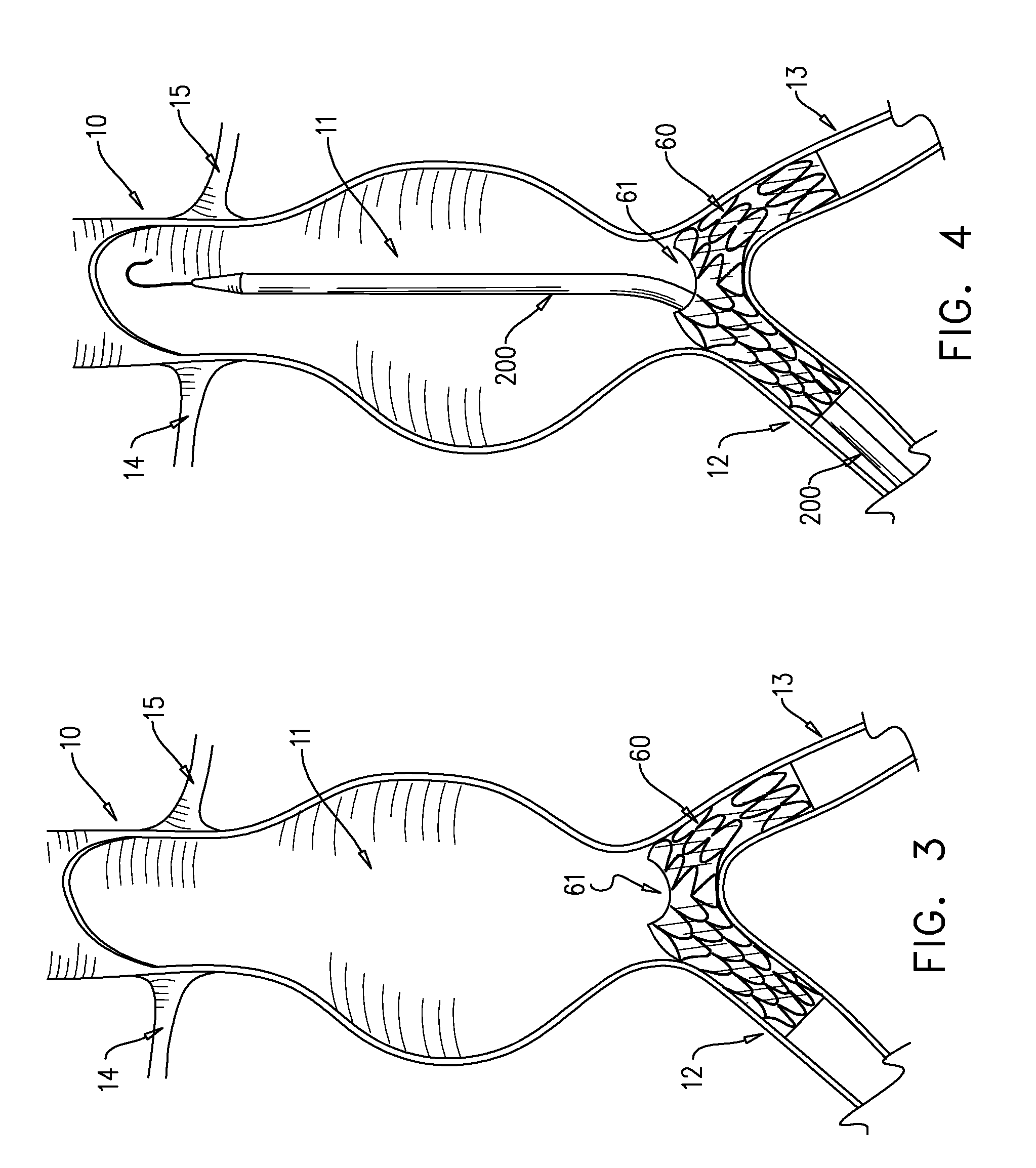Multi-component expandable supportive bifurcated endoluminal grafts and methods for using same
a technology of endoluminal grafts and supporting parts, which is applied in the field of endoluminal grafts, can solve the problems of increasing so as to the associated medical procedure, reduce the cost of implantation, and reduce the number of medical procedures. , the effect of reducing the number of medical steps
- Summary
- Abstract
- Description
- Claims
- Application Information
AI Technical Summary
Benefits of technology
Problems solved by technology
Method used
Image
Examples
Embodiment Construction
[0036]Reference is now made to FIG. 1, which illustrates one possible insertion step in the deployment of a component of an endoluminal graft in a non-limiting embodiment of the present invention. A catheter 100 is percutaneously inserted into a bifurcation 12 (e.g., one iliac artery) extending from a main trunk 10, using conventional transluminal methods, such as with a guidewire 50. The catheter 100 is bent or deflected at an angle so that it passes the main lumen and is then introduced into a second bifurcation 13 (e.g., the second iliac artery) extending from the main trunk 10. FIG. 1 shows two branch arteries (arterial ostia) 14 and 15 branching from main trunk 10. There is an aneurysm 11 in the main trunk 10. Catheter 100 includes two catheter portions 101 and 102. Bifurcations 12 and 13 may also be referred to as arterial ostia 12 and 13.
[0037]Reference is now made to FIG. 2, which illustrates another deployment step of a component in a non-limiting embodiment of the present ...
PUM
 Login to View More
Login to View More Abstract
Description
Claims
Application Information
 Login to View More
Login to View More - R&D
- Intellectual Property
- Life Sciences
- Materials
- Tech Scout
- Unparalleled Data Quality
- Higher Quality Content
- 60% Fewer Hallucinations
Browse by: Latest US Patents, China's latest patents, Technical Efficacy Thesaurus, Application Domain, Technology Topic, Popular Technical Reports.
© 2025 PatSnap. All rights reserved.Legal|Privacy policy|Modern Slavery Act Transparency Statement|Sitemap|About US| Contact US: help@patsnap.com



